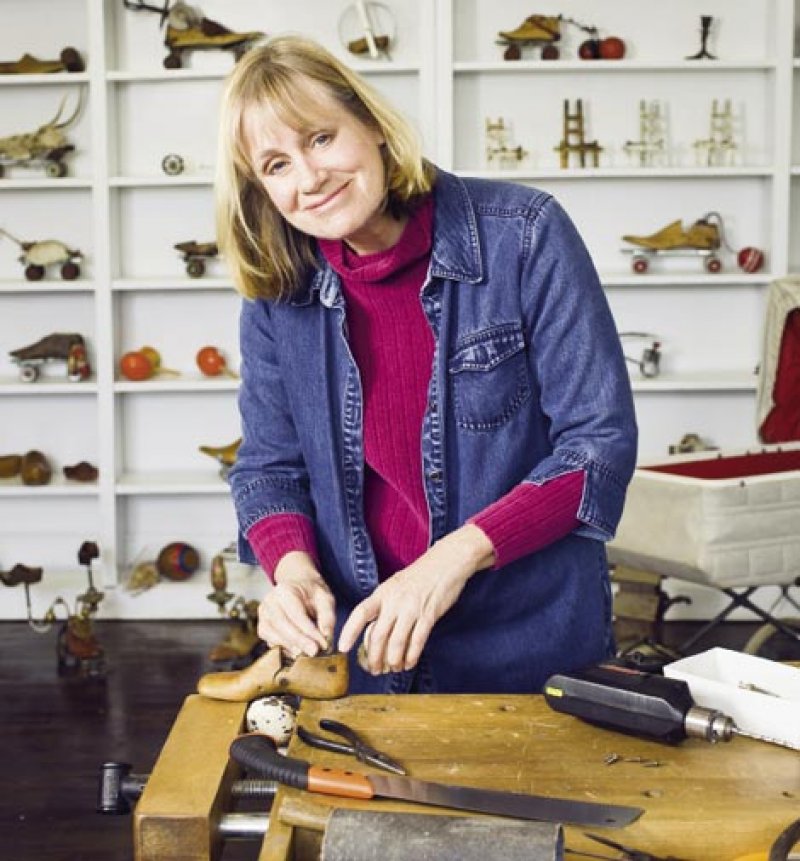Past Imperfect
Past Imperfect: Polk County artist Janet Orselli reanimates abandoned objects to create uncommon beauty
There’s an undeniable cabinet-of-curiosities feel to Janet Orselli’s studio. The shelves along the Polk County artist’s walls are lined with found objects and natural artifacts fashioned into assemblage art with a captivating poignancy—tortoise shells fastened to vintage platform roller skates, worn wooden shoe forms given wheels, deer figurines made from chicken wishbones. Orselli’s talent for transforming what’s discarded and nurturing it into art produces surprising work that is by turns whimsical and haunting.
From the full-scale, abandoned mansion-themed installation she created at Charleston’s Gibbes Museum in 2005 to the small, heart-shaped wall hangings she makes from cut-up shoe soles, a reverence for cast-off objects runs through Orselli’s work. While the average person may not be able to see worth or potential in a broken chair or pair of old-fashioned croquet mallets, Orselli has an eye for a certain elusive character in an object, a dignity or inner spirit. Pairing an object that is stuck in the past, such as the shoe forms or a decades-old back brace, with a set of wheels or a vintage baby carriage, propels her pieces onward. Still, she’s careful not to insist that the careworn
article become conventionally beautiful. For instance, a chair assemblage hanging from her wall is slightly off-kilter. “It pushes back. It refuses to be perfect,” she says. And that is part of its charm.
Last fall, Orselli’s installation Impedimenta, composed of wall-mounted, altered, vintage wooden crutches, was featured as part of the Tallahassee International exhibition at Florida State University. Her wheeled wooden shoe forms were included in the 38th “Toys Designed by Artists” show at Arkansas Arts Center. Also in 2012, she received a Regional Artist Project grant from the Henderson County Arts Council.
While she has earned recognition on a national level, including a grant from the prestigious Pollack-Krasner Foundation in 2005, Orselli finds herself more and more focused on her community. Recently, she became involved with the revival efforts at the abandoned Mill Spring School, now the Mill Spring Agricultural Development and Community Center, where her studio is located. Teaching art and helping others bring out their creativity has “opened me up to new ways of doing things,” she says. It seems that nurturing quality she transfers to her found objects extends to people, too, and comes right back to her in turn.
See for Yourself
Orselli welcomes visitors to her studio by appointment. Contact her at jorselli@hotmail.com. To learn more about her work and upcoming exhibitions, visit www.janetorselli.blogspot.com
